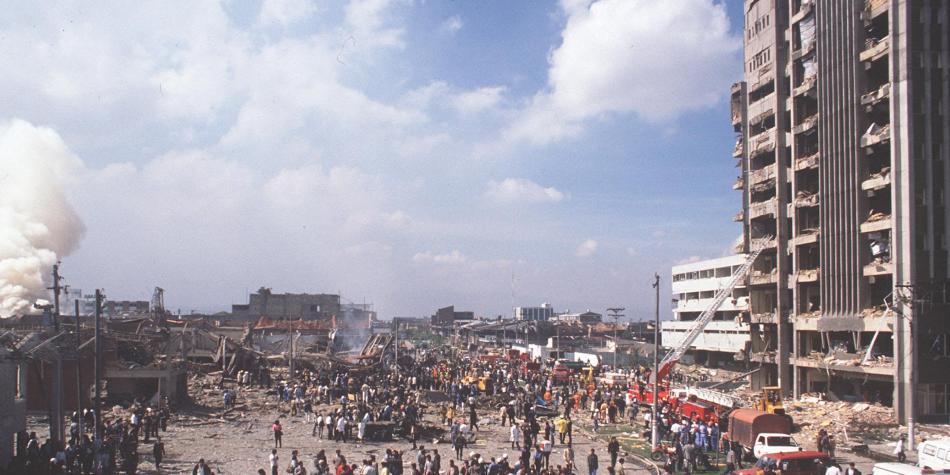
The Bogotá DAS Bombing (1989)
Overview
On December 6, 1989, one of the most devastating attacks in Colombia’s history occurred in Bogotá. A car packed with 500 kilograms of explosives was detonated outside the headquarters of the Departamento Administrativo de Seguridad (DAS), Colombia’s intelligence agency. The bombing, orchestrated by the Medellín Cartel led by Pablo Escobar, was a direct response to the government’s efforts to extradite drug traffickers to the United States.
How It Happened
The attack was meticulously planned by members of the Medellín Cartel. A Renault 18 sedan was loaded with dynamite and strategically parked near the DAS building in the heart of Bogotá. At approximately 7:30 AM, during rush hour, the explosives were detonated remotely. The timing ensured maximum casualties, as hundreds of employees and civilians were either inside the building or passing by the busy area.
The explosion obliterated the car and caused severe structural damage to the DAS building, while also impacting nearby structures. Glass, debris, and shrapnel were thrown hundreds of meters, creating widespread destruction.
Impacts of the Attack
The bombing resulted in catastrophic human and material losses:
- Casualties: 63 people were killed, and over 2,000 were injured, many of whom were civilians.
- Destruction: The blast caused severe damage to the DAS building and surrounding infrastructure, displacing many businesses and residents.
- Psychological Impact: The attack struck fear into the Colombian population and symbolized the growing power of the Medellín Cartel during its war against the government.
- Political Consequences: The bombing intensified international and national pressure on the Colombian government to combat drug cartels more aggressively. It also reinforced the government’s resolve to continue extraditing cartel members to the U.S.

Legacy
The Bogotá DAS bombing remains a painful reminder of the violent era during Colombia’s drug wars in the late 20th century. It highlighted the lengths to which cartels were willing to go to challenge state authority and demonstrated the dire need for stronger measures against organized crime.
Today, the site of the attack is seen as a symbol of resilience, as Colombia continues its journey towards peace and stability. Efforts to remember the victims and educate future generations about the impacts of such violence have become an integral part of the country’s history.
Source: Historical accounts and archives detailing the Medellín Cartel’s activities.